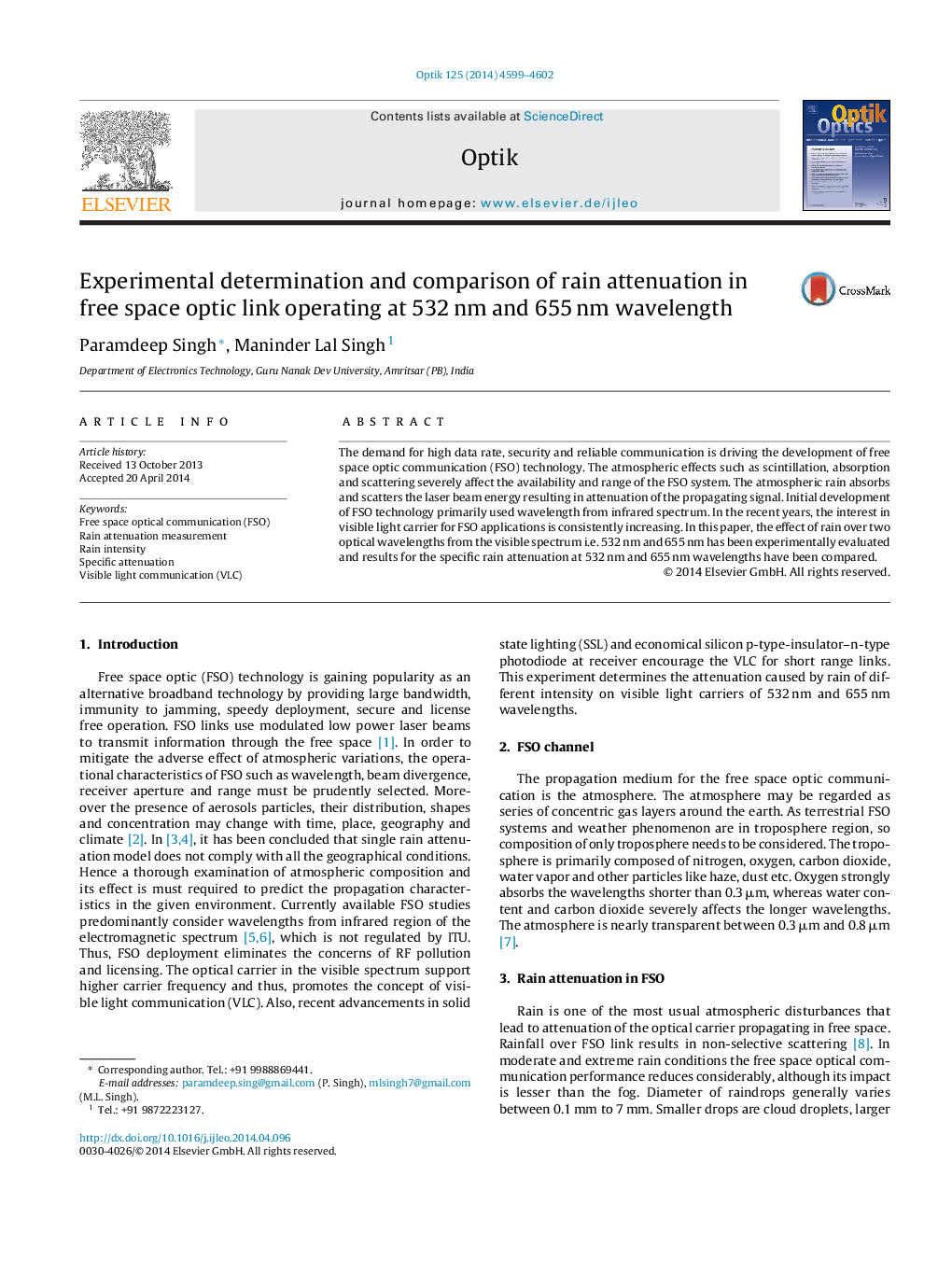| Article ID | Journal | Published Year | Pages | File Type |
|---|---|---|---|---|
| 849413 | Optik - International Journal for Light and Electron Optics | 2014 | 4 Pages |
The demand for high data rate, security and reliable communication is driving the development of free space optic communication (FSO) technology. The atmospheric effects such as scintillation, absorption and scattering severely affect the availability and range of the FSO system. The atmospheric rain absorbs and scatters the laser beam energy resulting in attenuation of the propagating signal. Initial development of FSO technology primarily used wavelength from infrared spectrum. In the recent years, the interest in visible light carrier for FSO applications is consistently increasing. In this paper, the effect of rain over two optical wavelengths from the visible spectrum i.e. 532 nm and 655 nm has been experimentally evaluated and results for the specific rain attenuation at 532 nm and 655 nm wavelengths have been compared.
